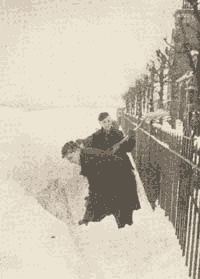Pupils received manual instruction lessons on Wednesday mornings and Tuesday afternoons at the Science and Arts Institute (at a cost of 3/6 per lesson). The Headmaster suggested in 1914 (Minutes of the School) that the girls should not take mathematics but that they should devote their time to private study in their weaker subjects. He suspended latin lessons for both boys and girls until after the summer with a view to obtaining better results with weaker students. In 1918 drill instruction was started for the boys and the following year hygiene was introduced into the curriculum.
1920s
With pupils arriving from all the villages and towns that make up present day Milton Keynes, special transport was laid on. A motor carriage ran from Wolverton to Bletchley on school days in term time and a request was sent to the railway company to make a stop at Wolverton in the morning for the train coming from Bletchley so that pupils could alight. In 1929 a suitable train was laid on from Bletchley at 8.35. There was also a bus that came over from Olney with pupils.
In 1920, cookery lessons were introduced for the first time - presumably just for girls.
1930s
Phyllis Light remembers the separate entrances for boys girls and teachers and that this was further perpetuated in the school with separate staircases for boys and girls. The pupils largely stayed in their classrooms with teachers for the different subjects coming in to teach them. There was a head boy and a head girl and the prefects who also carried responsibilities. Most students left school at 16 to work, but some stayed on to sixth form.
 Winter 1939 walking on the canal - taken from The Wolvertonian Summer 1940 (magazine of the County School, Wolverton)
Winter 1939 walking on the canal - taken from The Wolvertonian Summer 1940 (magazine of the County School, Wolverton)
It was not however all hard work and no play. There were trips out to the cinema or theatre (to see set plays or historical dramas), visits to historical sites and as these photos show, school walks along the frozen canal were even allowed. In wartime it was not unusual to take a day off to go blackberrying for the school to make jam or to assist on local farms (as recalled by Miss Button).
1940s
Rene Healey remembers that the forms were split according to ability with Form A being the most able pupils. Extra pupils were accommodated in the girls areas during the war when Toddington High school was evacuated to Wolverton and the impact of war meant that team sports were reduced and many school leavers joined up. The school motto was 'Per Laborem ad Honorem' (Through work to honour).
Jim Skipper and others recall that there was a house system at the school which was based on where the pupils lived. The Red House had pupils from Wolverton itself and its immediate surroundings. The Yellow House had pupils from Stony Stratford, Loughton, Bletchley, the Brickhills, Woburn and villages between the West & South of Wolverton. The Green House drew on pupils from New Bradwell, Stantonbury, Newport Pagnell, Olney, Linford and villages between the East and North of Wolverton. These divisions formed the House system on which the school was based for competitions. The House masters were Mr. Eyles (Red), Mr. Long (Yellow) and Miss Davey (Green). Competitions for pupils were held on a house by house basis with the Annual House Festival held in the Easter term. Pupils were expected to bring an example of work carried out at home (e.g. painting, modelling, meccano models, drawing, dressmaking, embroidery, etc.). A display of work was put on in the gym and the staff gave a first, second and third award in various categories.
The school day began at 8.50 with registration and then assembly followed at 9.00 (one assembly a week was a House assembly). There were four periods in the morning with a break and then four periods in the afternoon with school finishing at 4.10.
The subjects taught were English, History, geography, French, Latin, maths (arithmetic, algebra, geometry and trigonometry), science (physics, chemistry, biology and general science), woodwork, domestic science, art, divinity, physical education and games.
1950s
Each year was divided into two classes which were streamed by ability. Those who stayed on in the sixth form to complete their 'Highers' were prefects. Ron Goodwin can remember listening to 78 r.p.m. records in music lessons and reading Chaucer's Canterbury Tales in English which was very difficult as it is written in old English.
1970s
The school assembly was at the beginning of the day and could last up to an hour if there was a lot of awards and trophies to give out. The Headmaster, Mr Tom Lawson, greatly valued the assembly time for rewarding children and building self-esteem and school identity.
Heather Cassin remembers making an apron in needlework which she then wore in cookery lessons. She also remembers having Science lessons upstairs in the lab. Tracy Greys remembers that Fridays was always the day for spelling and maths tests.
There were four school houses named after local villages (Stewkley, Olney, Gayhurst and ?).
As many as thirty children came to Bushfield from Haversham and so they had a school bus laid on. This bus would collect them a little before the end of the school day which meant that they had to gather in the school hall and be ticked off a register before they could leave.
1980s
1990s
2000s
After registration in their classes, pupils have Literacy Hour followed by assembly for the whole school. Parents can also attend assmblies on a Friday and several do come - more come when certificates are being handed out. The school day starts at 9.00 and finishes at 3.10.
